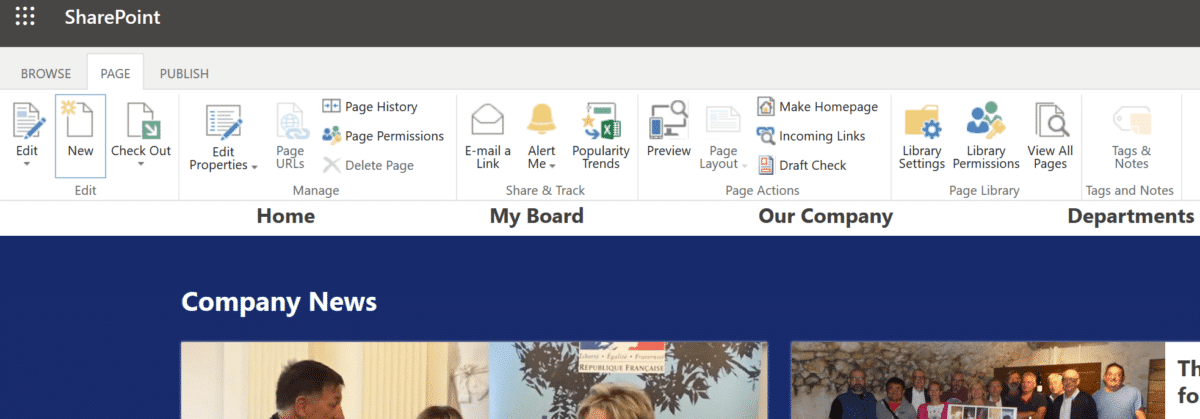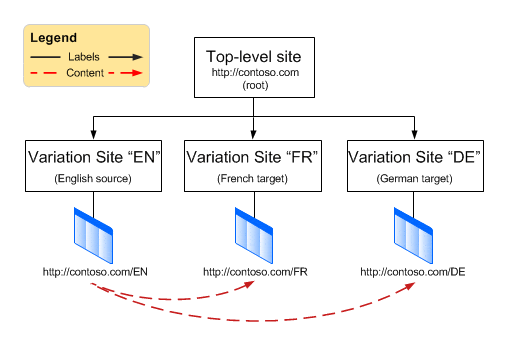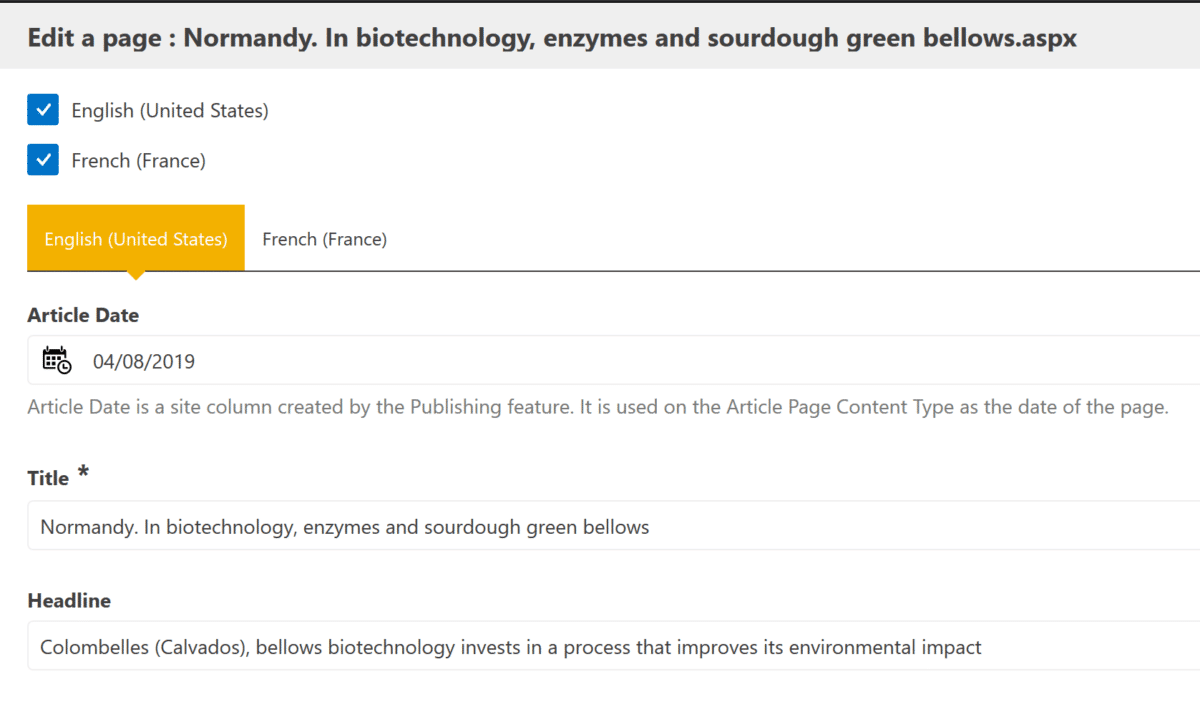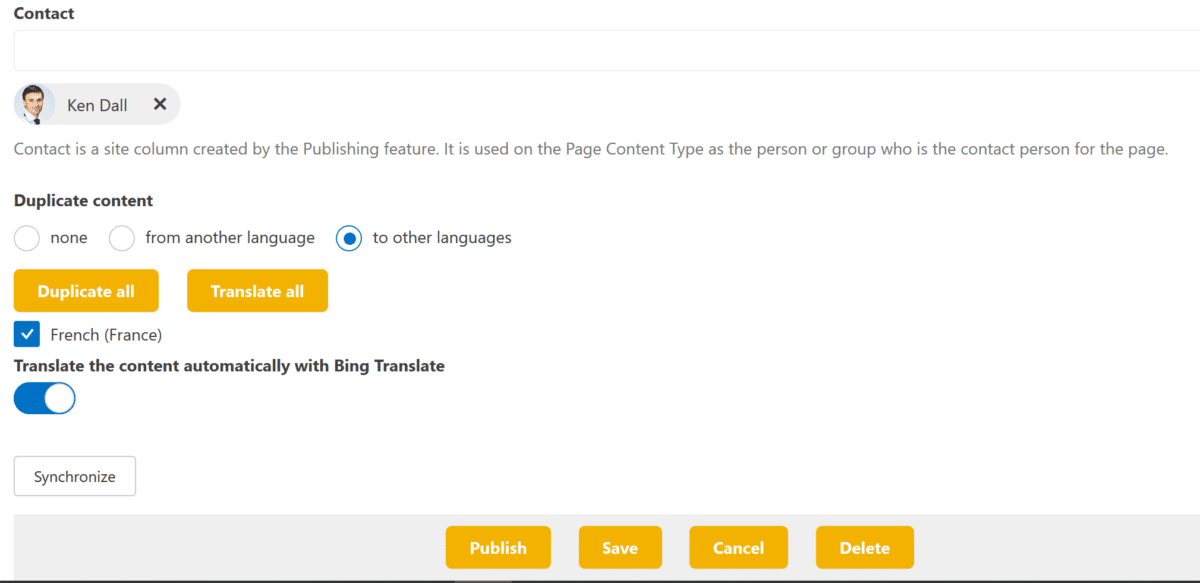Today’s information worker is more mobile and remote than ever in history. This mobility has allowed organizations to hire from across the globe. Hiring is no longer limited by location.
Yet, with this international workforce comes multiple languages – a new challenge for many. It means that organizations must now adapt and create content in several languages.
Providing information in an employee’s native language aids understanding, but the benefits run deeper. It also improves the employee experience in the digital workplace. Global companies that provide translated content build more inclusivity, embrace diversity, and demonstrate that they value multilingual users.
If your company intranet is built on SharePoint, multilingual options are key to creating a SharePoint site employees will love.
In this article, we will discuss the multilingual options available in a native SharePoint intranet and how these features can be enhanced using a multilingual intranet like Powell Intranet.
How to build a multilingual intranet using SharePoint
By default, SharePoint has two options for creating a multilingual intranet. Both options can be used exclusively or in combination to provide the best multilingual intranet experience.
- The SharePoint Multilingual User Interface (MUI) works in both Classic and Modern experiences.
- SharePoint Variations, which are currently only available in the Classic experience.
If you are using SharePoint on-premises, you are most likely using the Classic experience, while if you are in SharePoint Online, you may be using the Classic or Modern experience. Both options are technically possible to use in SharePoint 2013, 2016, 2019, and SharePoint Online. Check with your SharePoint administrator to be sure.
Multilingual Intranet Option 1: The SharePoint Multilingual User Interface (MUI)
The SharePoint MUI changes the language of a user’s personal view of site components. For example, an English-speaking user and a French-speaking user would visit the same site under one URL, but the French-speaking user would see the site’s components in French since that is what they have set as their default language. Site components include navigation, settings pages, help content, menus, and controls.

French vs English

The benefits of the SharePoint MIU are that it is simple to manage. There are no complex translation workflows. It is also easy for end-users to use. They need to select their default language in SharePoint to display default SharePoint intranet components in that language. Additionally, the SharePoint MIU is available in both Modern and Classic SharePoint experiences, so it is a future-proofed solution.
The limitation of the SharePoint MUI is that it only translates the default SharePoint components. It will not translate content created by users. For example, it will not automatically translate text added to a page, items in a SharePoint list, or metadata. Additionally, users will only be able to search using the default language of the SharePoint installation. MUI can also take strategic planning to enable. Planning and coordination will be required to ensure the best possible user experience. To learn more about these steps, please view this article.
However, working in only one language is often okay in collaboration scenarios. Typically, a team will agree on a default common language in which to work and won’t take the time to translate each piece of content.
To learn more about SharePoint MUI, please visit this page.
Multilingual Intranet Option #2: SharePoint Variations
The SharePoint Variations feature will duplicate the SharePoint site for each targeted language. All the content, including user-generated, can then be independently translated into each language. The end-user would visit a unique site URL targeted to their chosen language. In this case, there is one master content source, and then each language is translated, duplicated, and moved to each site.

The benefit of SharePoint Variations is that each translated content is independent and can be uniquely translated for the target desired languages. It also allows you to target content to suit different cultures, different markets, and different geographic regions. For example, you could change the address of an office in each variation of the content. Variations work well for more formal content, such as human resources sites, company news, and administrative messages.
SharePoint Variations require coordination, planning, and management to perform the work needed to translate content. It can be difficult to deliver each version of the content at the right time, especially when you have many languages, and project management of this process can be complex. First, you will need to write the content and then manually translate it into each language, which can be time-consuming.
To learn more about SharePoint Variations, please visit this site.
How Powell Intranet simplifies content translation
Want the benefit of both the SharePoint MIU and SharePoint Variations without the hassle of manual translation? Powell Intranet is a SharePoint intranet solution that helps simplify the setup of Variations, Management of Content, automatic translation, and the ability to switch variation contexts. The Powell intranet-in-a-box works seamlessly with these features and provides automatic content translation using Bing Translate and Cognitive Services.
Switch Variation Context
Once users log on to Powell Intranet, their native language settings configured on their browser will automatically redirect users to their preferred language variation. Once on the site, users can switch back and forth to different language sites or other location sites exposed through variations.
Manage Content
Managing content from one location is essential because it is efficient. Powell Intranet allows content authors and contributors to access and manage all translated content centrally. Changes can be made from one place and pushed to all target language variations.

Translate Content
The content can be translated manually, but there is a more efficient option. With the initial automatic translation service, you can translate content into the target language. Translation services are not perfect, so they should be used as a starting point. Users usually edit the auto-generated translation and take over the content to perfectly dial in the language.

Setup Variations
Powell Intranets’ core engine, Powell Manager, allows Administrators to quickly and effectively set up the scenarios for Multi-Language variations. Selecting a new Site and all the target language variations can be performed in a matter of minutes and managed from one place as new languages are implemented.
Conclusion
So which is better for your organization – Powell Intranet vs. SharePoint? The good news is you don’t have to choose, Powell Intranet leverages the best of Microsoft 365 and SharePoint Online to give the best value and end-user experience. Using both MUI and Variations, Powell Intranet adds management and translation features that further enhance the fundamental multilingual intranet features of SharePoint Online.
